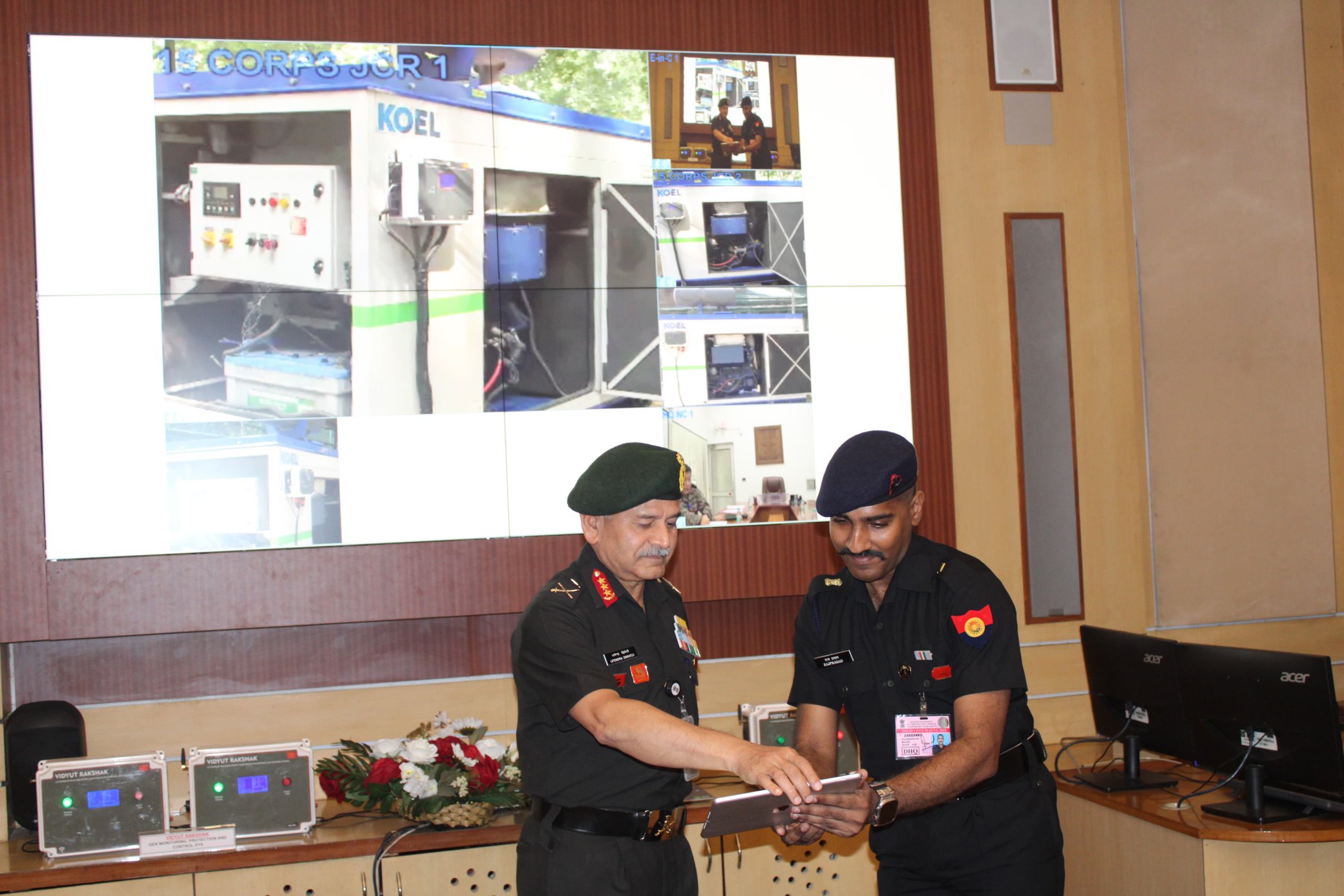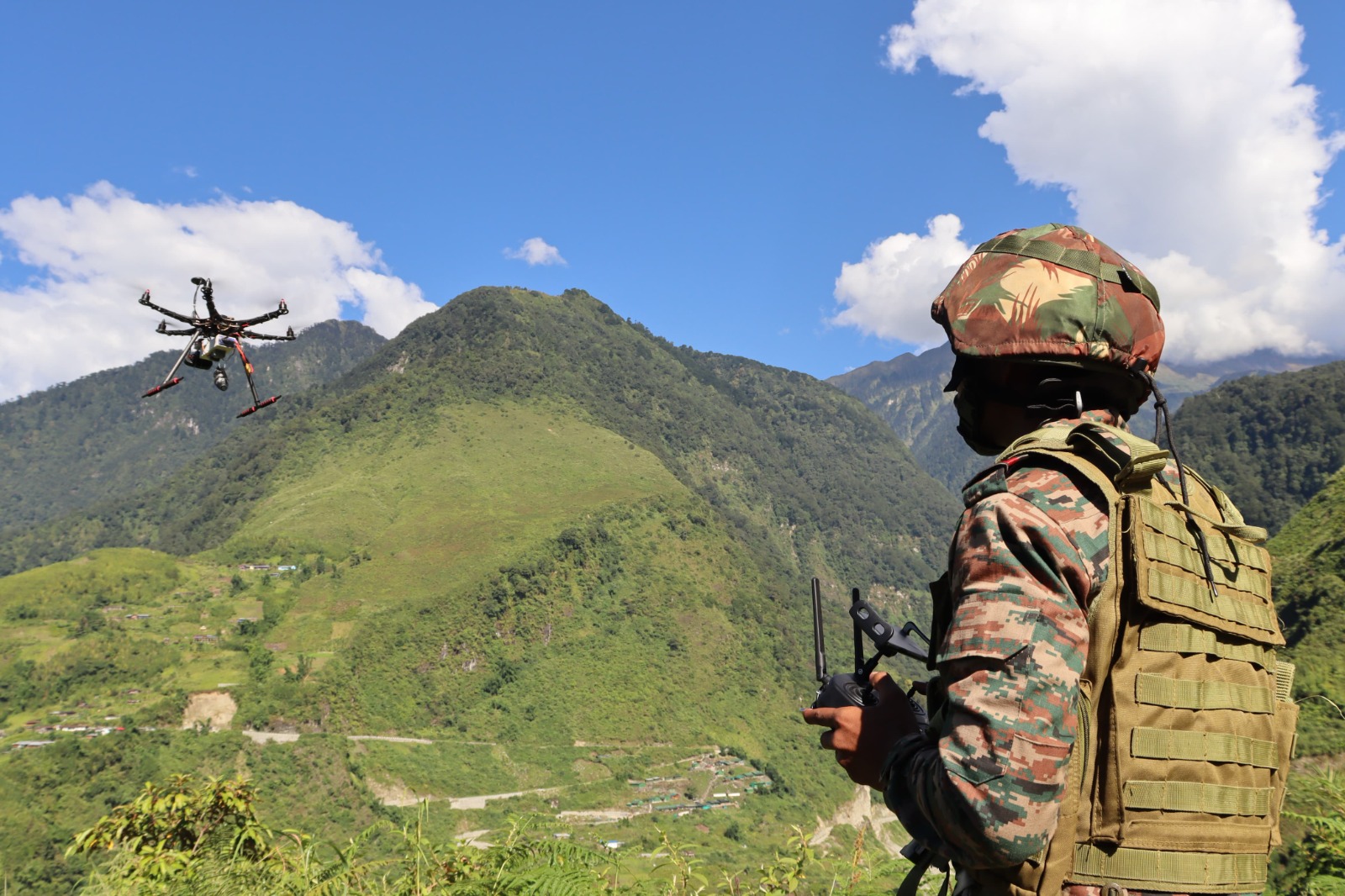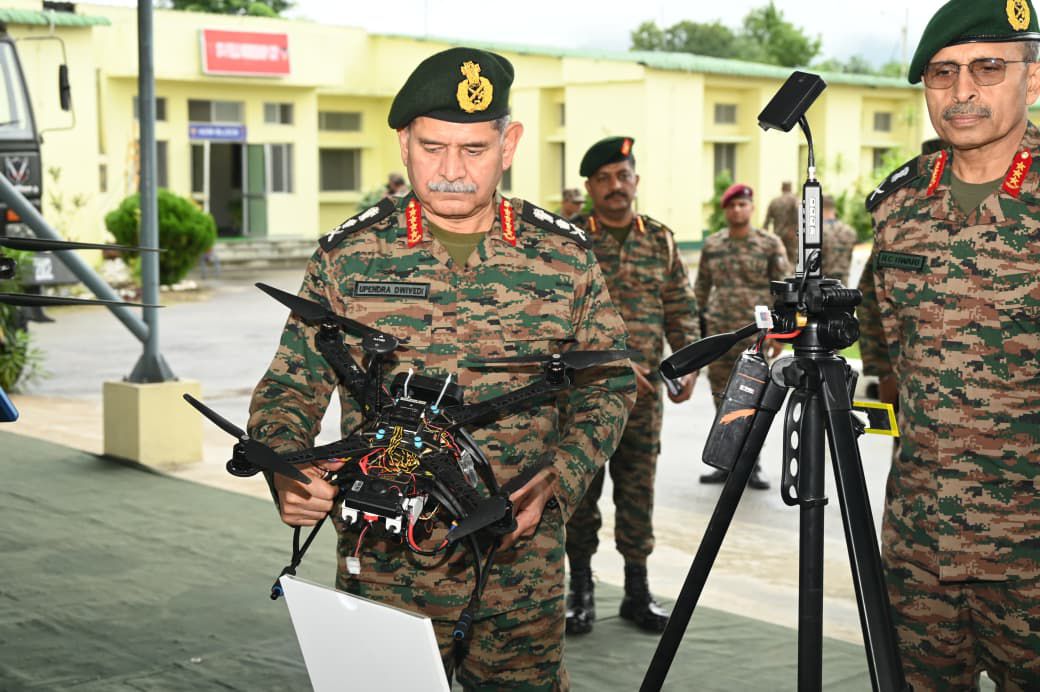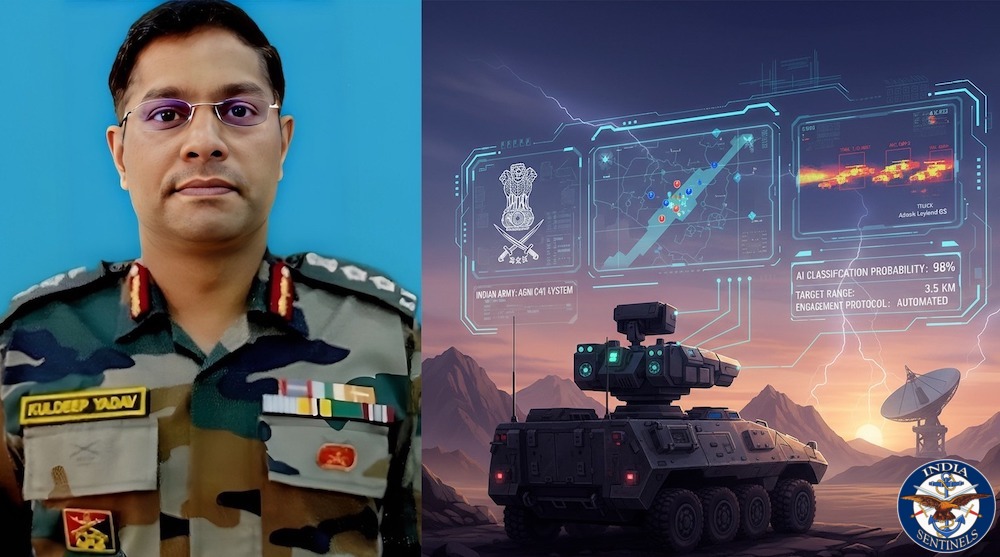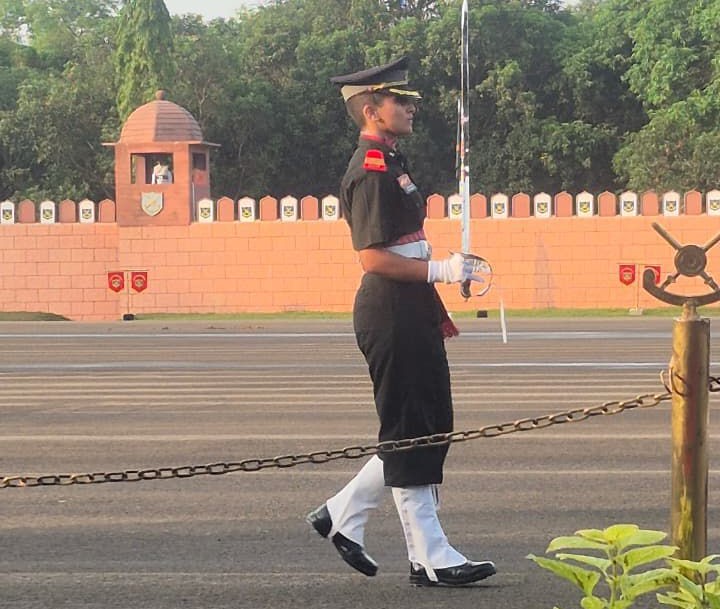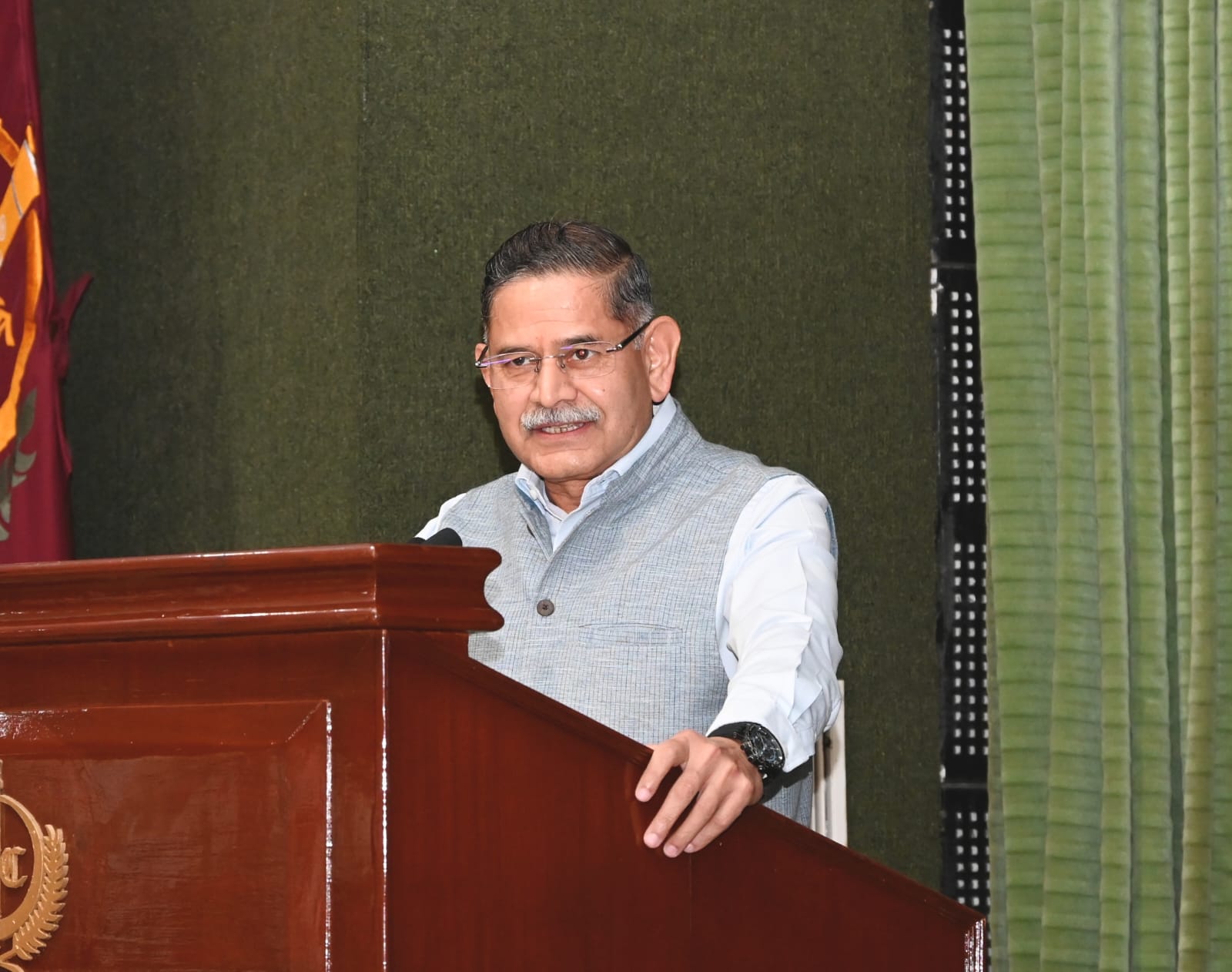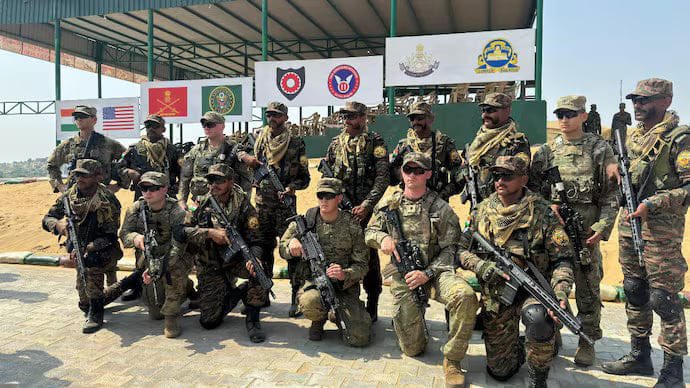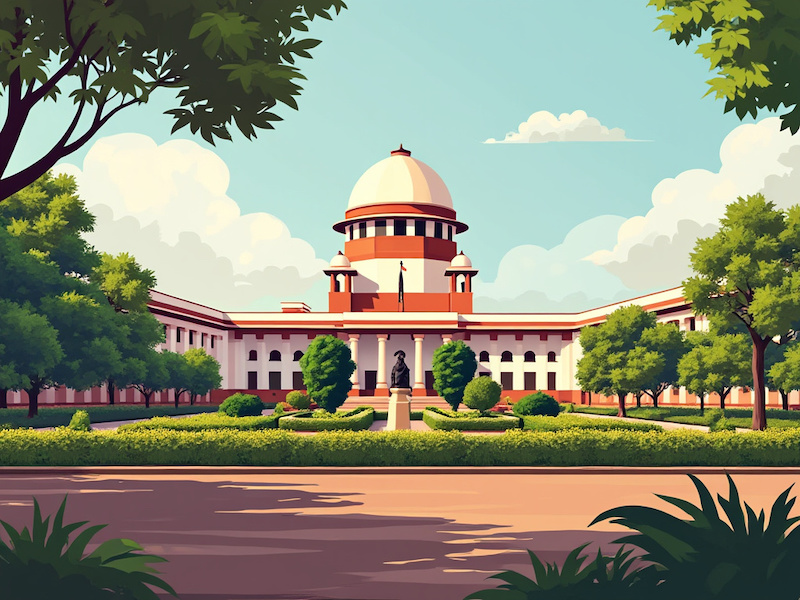 An artist’s rendition of the Supreme Court of India.
An artist’s rendition of the Supreme Court of India.
New Delhi: The Supreme Court has upheld the dismissal of Lieutenant Samuel Kamalesan, a Christian officer in the Indian Army’s 3rd Cavalry Regiment, who refused to enter the sanctum sanctorum of his unit’s temple and gurdwara during mandatory religious parades. The judgment, delivered on Tuesday, by Chief Justice of India Surya Kant and Justice Joymalya Bagchi, places military discipline firmly above individual religious interpretation, though it exposes unresolved tensions between operational necessity and constitutional protections of conscience.
The officer’s stand
Kamalesan was commissioned on March 11, 2017, and posted to Squadron B, a predominantly Sikh unit where he commanded approximately 20 soldiers. His duties required him to lead weekly religious parades at the regiment’s temple and gurdwara. As troop leader, he occupied a position of heightened responsibility for maintaining unit cohesion and exemplifying regimental traditions.
The officer, however, sought exemption from entering the innermost sanctum during rituals such as puja, aarti, and havan ceremonies. He maintained that entering these sacred spaces during active worship violated his monotheistic Christian beliefs, specifically the First Commandment prohibiting worship of other deities. Kamalesan repeatedly proposed standing respectfully outside the sanctum while his troops fulfilled their religious obligations.
His superiors rejected this compromise and issued repeated orders requiring full participation, including entry into the sanctum. Over nearly two years, multiple levels of command counselled him – his immediate superiors, the commanding officer, other Christian officers and even a local Christian pastor who reportedly advised that such participation would not violate Christian tenets.
Kamalesan remained unmoved. On January 31, 2019, the Army issued him a show-cause notice charging misconduct under Section 19 of the Army Act, 1950, read with Rule 14 of the Army Rules, 1954. He was dismissed from service in March 2021 without pension or gratuity.
High court’s rationale
When Kamalesan challenged his dismissal before the Delhi high court in May this year, Justice Navin Chawla and Justice Shalinder Kaur upheld the Army’s decision. The court determined that the case fundamentally concerned obedience to a lawful command from a superior officer – a matter explicitly covered under Section 41 of the Army Act – rather than religious freedom per se.
The high court acknowledged that while regiments maintain religious traditions and conduct ceremonies, the armed forces operate as a secular institution. These traditions serve motivational functions designed to foster solidarity rather than undermine secular ethos.
The court emphasized that Kamalesan, occupying a command position, carried responsibilities transcending personal beliefs. His persistent refusal to participate fully in regimental parades, despite extensive counselling, was deemed incompatible with military discipline and detrimental to unit cohesion and troop morale – factors critical in combat where rapport with troops determines battlefield effectiveness.
Constitutional arguments
Senior advocate Gopal Sankaranarayanan, representing Kamalesan before the Supreme Court, characterized the dismissal as punishment for a single instance of refusal rather than a pattern of indiscipline. He highlighted that Kamalesan maintained an exemplary service record and actively participated in regimental and multi-faith events, including Hindu festivals like Holi and Diwali.
Sankaranarayanan contended that Kamalesan’s monotheistic faith explicitly prohibits worship of other deities, making entry into a sacred space during active worship problematic. He stressed that Kamalesan never sought complete exemption but merely requested standing outside the sanctum, demonstrating both respect for military tradition and genuine commitment to spiritual convictions.
He argued that only one superior officer escalated the issue while the broader unit, particularly the Sikh soldiers under his command, harboured no grievance and maintained strong camaraderie with him.
On constitutional grounds, Sankaranarayanan invoked Article 25, which guarantees freedom of religion and the right to propagate one’s faith. He cited the Supreme Court’s precedent in Bijoe Emmanuel v State of Kerala (1986) case to argue that Article 25 inherently protects the right to abstain from religious practices contrary to one’s faith. He also characterized the dismissal as excessive punishment failing proportionality review, particularly for what amounted to a single act of non-compliance.
SC’s sharp response
The Supreme Court approached the matter with considerable firmness, describing Kamalesan’s conduct as “the grossest kind of indiscipline by an Army official” and declaring him fundamentally “a complete misfit” and “cantankerous person” unsuitable for military service. Chief Justice Kant questioned the message being conveyed by such conduct, stating emphatically: “What kind of message has he been sending? He should have been thrown out for this only.”
The court reaffirmed that the Indian Army is an “inherently secular institution” where camaraderie, discipline and unit cohesion cannot be compromised by individual interpretations of religious practice. The chief justice noted that a gurdwara is one of the “most secular” places, and implied that Kamalesan’s refusal was particularly inexplicable given the multi-faith, inclusive character of regimental worship spaces.
On the constitutional question of Article 25, Justice Bagchi clarified that the provision protects only “essential” religious features, not “every sentiment” or personal preference. He questioned the legal basis for Kamalesan’s position: “Where in the Christian faith is entering a temple or another religious place barred?”
The court emphasized a peculiarity in Kamalesan’s stance: he had refused even to enter a “sarva dharma sthal” – a multi-faith worship space serving persons of all religions, used in secular, ecumenical contexts such as inside Parliament. Despite assurances from a Christian pastor that entering such a space would not violate his faith, Kamalesan persisted in his refusal.
Justice Bagchi pointedly observed: “When your pastor counsels you, you leave it at that. You cannot have your private understanding of what your religion permits, that too, in uniform.”
The court further emphasized the gravity of Kamalesan’s role. As a troop leader commanding Sikh soldiers, his refusal to participate in their religious traditions while leading them was construed as deeply insulting to their faith and to his soldiers personally.
Chief Justice Kant remarked: “You are a troop leader and your troop comprises Sikh soldiers. They are in a gurdwara, and this is how he conducts himself? The tone and tenor of his refusal are insulting. You are insulting your troops. You cannot have a private understanding of what your religion permits when you are in uniform.”
The bench refused Kamalesan’s alternative request for a proportionality review and reduction of punishment, finding no grounds to interfere with the dismissal order. When Sankaranarayanan urged that upholding the dismissal would “send a wrong message”, the chief justice countered: “This will send a strong message.”
Legal framework
The Army and court’s position rests on Section 41 of the Army Act, which prescribes penalties for wilful defiance of a superior’s lawful command. The military maintained that participation in regimental religious parades constitutes a lawful order essential for maintaining unit discipline, cohesion and morale – operational necessities in military contexts. The courts accepted that the restriction on Kamalesan’s religious freedom falls within Article 33 of the Constitution, which permits Parliament to modify fundamental rights of armed forces personnel to ensure discipline and operational effectiveness.
However, several counterarguments merit consideration.
Legal scholars questioned whether forcing participation in religious rituals exceeds the permissible scope of lawful military orders, particularly when it compels an individual to violate conscience. The Delhi high court’s declaration that the case was “not about religious freedom” but merely “obedience” conflates two distinct constitutional questions that need not be mutually exclusive.
A second critique concerns the factual basis for inferred harms. The Army asserted that Kamalesan’s refusal damaged unit cohesion and troop morale, yet neither the courts nor the military presented concrete evidence of soldiers complaining or morale deteriorating due to his non-participation. Testimony suggested his troops harboured no grievance and maintained strong camaraderie with him. The courts treated abstract risks as sufficient to justify dismissal without substantive proof.
Critics also highlight inconsistency in the court’s reasoning regarding the sarva dharma sthal. If the court accepted that this space was genuinely multi-faith and secular, and if even the pastor confirmed participation would not violate Christian tenets, then refusal to enter appears more defensible on grounds that the officer’s conscience claims, while perhaps mistaken, were made in good faith.
The court’s dismissal of this distinction seems to rest on an implicit premise that the officer must defer to institutional interpretations of his religious obligations.
Finally, proportionality remains contested. Dismissal without pension or gratuity – effectively financial ruin and permanent career termination – is among the most severe disciplinary penalties available. Critics argue this sentence was disproportionate to a single refusal, particularly given Kamalesan’s otherwise exemplary service record and the absence of demonstrable unit harm.
Broader implications
Legal scholars and court observers say the judgment reinforces that serving military personnel cannot unilaterally determine the limits of religious freedom or conscience. It affirms that the armed forces operate under a distinct constitutional framework permitting greater restrictions on fundamental rights than civilian contexts. However, the decision leaves unresolved tensions between military necessity and constitutional protection of conscience in Indian jurisprudence.
The courts’ refusal to engage substantively with Article 25 protections and their acceptance of abstract claims of damage to morale without concrete evidence suggest that future cases may benefit from more rigorous examination of proportionality and the actual operational necessity of contested orders.



